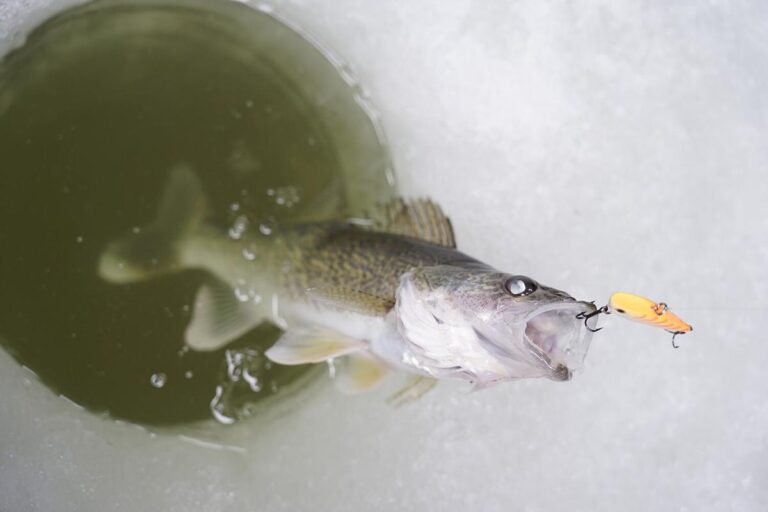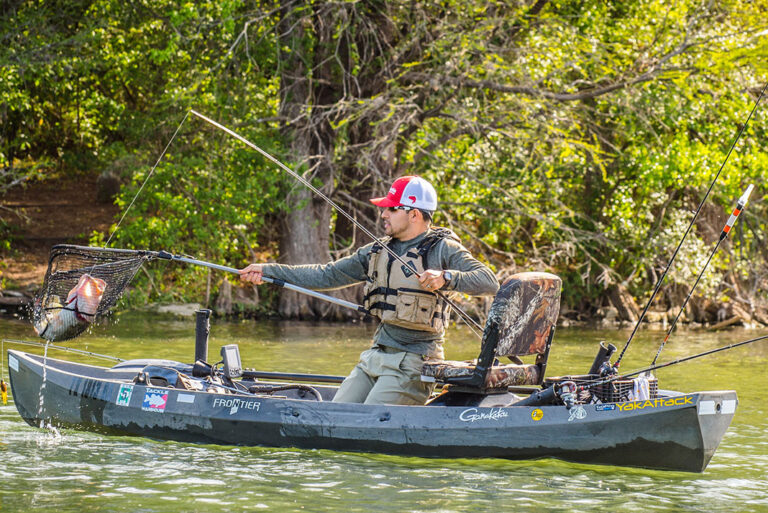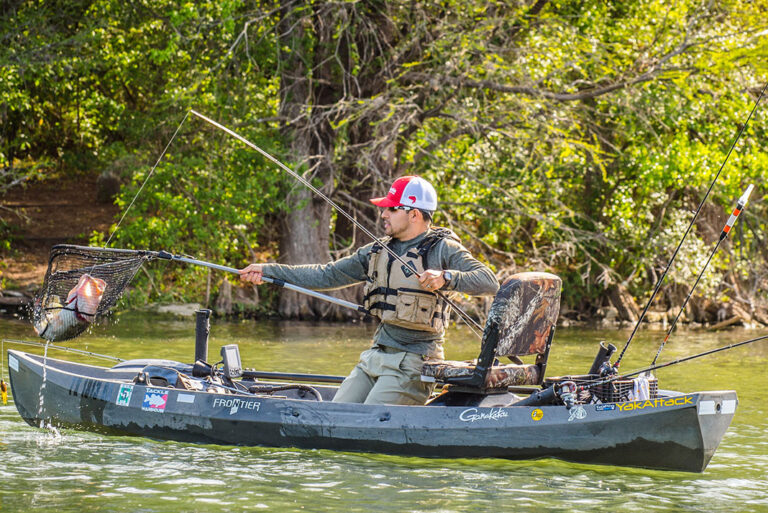Common river fish species and their habits include trout, catfish, bass, and carp. These fish vary in size, feeding habits, and preferred habitats.
For example, trout are known for hiding in pockets of fast-moving water, while catfish are bottom dwellers that prefer still waters and muddy river bottoms. Understanding the habits of these fish can help anglers successfully catch them. Keep reading to learn more about the characteristics, diets, and habitats of these popular river fish species.

Credit: www.australiangeographic.com.au
The Diversity Of River Fish Species
Rivers are abundant places where a variety of fish species can be found. Whether you are an expert angler or just a curious adventurer, understanding the general characteristics and behaviors of different fish species can enhance your experience. Below are some reasons why different types of river fish behave uniquely, and where you might find these fish.
Introduction To The Wide Variety Of River Fish Species
River ecosystems are home to an incredible diversity of fish species. From tiny minnows to massive catfish, the fish that inhabit the waters are as impressive as they are varied. Below is an overview of some of the most common river fish species.
Explanation Of The Different Habitats That River Fish Can Be Found In
Different fish species are often found in different habitats in and around rivers. These habitats can be divided into three general categories: deep water, shallow water, and riverbanks. Here’s what you can expect to find in each of these categories:
- Deep water: Species such as lake trout and walleye can be found in deeper sections of rivers where water flows more slowly. These fish are also known for being less active and more cautious than surface fish.
- Shallow water: Shallow streams or rivers often attract smaller fish such as minnows and sunfish. These fish like to be in the shallows where water is warmer and there is ample food and cover.
- Riverbanks: Predatory fish such as bass and pike are often found in the reedy, vegetative areas of riverbanks. They like to hide in areas where their prey might pass by, and will often strike out quickly when they do.
Overview Of The Unique Characteristics And Behaviors Of Different River Fish
Different fish species behave in different ways, based on their size, diet, and habitat. Understanding these differences can be invaluable for any angler looking to improve their chances of catching fish. Here is a quick overview of some of the more commonly caught river fish species:
- Trout: Trout are often caught in colder, freshwater streams and are known for their quick, lively movements. They are carnivorous and prefer to feed on insects and other small aquatic life.
- Bass: Bass are aggressive fish that are often found lurking in deep pools or weed beds near the riverbank. They are carnivorous and will eat just about any type of prey they can catch.
- Catfish: Catfish are bottom feeders that prefer deeper waters where they can scour the riverbed for food. They are omnivores and will eat everything from insects to small fish.
- Pike: Pike are ambush predators that like to hide in weedy, vegetative areas of riverbanks. They are carnivorous and will stalk their prey before striking out quickly.
- Sunfish: Sunfish are common in shallow, warm waters and are known for their brightly colored scales. They prefer to feed on insects and small invertebrates, and can be caught using lightweight tackle.
Understanding the different characteristics and behaviors of river fish species can help make any fishing trip more successful and enjoyable. Keep these tips in mind when planning your next outing and see if they make a difference in the types and numbers of fish you catch!
The Habits Of Popular River Fish Species
Overview Of The Most Commonly Targeted River Fish Species, Such As Trout And Bass
When it comes to fishing in rivers, there are a few species that people like to target. Two of the most commonly fished species in rivers are trout and bass. Here is an overview of each:
Trout
- Trout are freshwater fish that are highly prized for their delicate flavor and challenging catches.
- These fish can be found in many different types of rivers, from smaller streams to larger bodies of water.
- They tend to prefer colder water temperatures and are often found in deeper, shaded areas.
- Different types of trout have different feeding habits, but most will eat small insects, crustaceans, and small fish.
- The most popular and well-known types of trout include rainbow trout, brown trout, and brook trout.
Bass
- Bass are another popular river fish species that people love to fish for.
- Like trout, they can be found in many different types of rivers and streams.
- Bass are more warm-water fish and prefer to live in shallower waters with plenty of vegetation.
- They are predators and will eat a variety of prey, including insects, smaller fish, and other aquatic creatures.
- Popular bass species include largemouth bass, smallmouth bass, and spotted bass.
In-Depth Look At The Habits And Behaviors Of Each Species, Including Feeding Habits, Spawning Behaviors, And Preferred Habitats
Trout
- Feeding habits: Different types of trout have different feeding habits, but most will eat small insects, crustaceans, and small fish. Fly fishing is a popular technique for catching trout because it mimics the movement of insects on the surface of the water.
- Spawning behaviors: Trout will typically spawn in the spring and fall months. They prefer colder water temperatures and will lay their eggs in areas with plenty of current and oxygenation.
- Preferred habitats: Trout tend to prefer colder water temperatures and are often found in deeper, shaded areas. They can be found in rocky streams, large rivers, and even in lakes.
Bass
- Feeding habits: Bass are predators and will eat a variety of prey, including insects, smaller fish, and other aquatic creatures. Live baits like worms and minnows are popular when targeting bass.
- Spawning behaviors: Bass typically spawn in the spring months when water temperatures are between 55-65 degrees fahrenheit. They will often create nests in shallow water near vegetation.
- Preferred habitats: Bass are more warm-water fish and prefer to live in shallower waters with plenty of vegetation. They can be found in rivers, streams, and lakes.
Discussion Of The Best Techniques For Catching Each Species, Including Bait Selection And Fishing Methods
Trout
- Bait selection: Fly fishing is a popular and effective method for catching trout. There are many different types of flies available, but some popular ones include dry flies, nymphs, and streamers.
- Fishing methods: In addition to fly fishing, spin fishing is another popular technique for catching trout. Spinners and spoons are effective lures to use when spin fishing for trout.
Bass
- Bait selection: Live baits like worms and minnows are popular when targeting bass. Artificial lures like spinners and crankbaits can also be effective.
- Fishing methods: When fishing for bass, it’s important to mimic their natural prey as much as possible. This can be done by using lures that imitate small fish or insects. Techniques like jigging and casting are popular when fishing for bass in rivers.
Conclusion
The rivers are habitants of various species of fish that have adapted to different environments in a unique way. From the aggressive and territorial smallmouth bass to the elusive and challenging brook trout, each species has its distinct personality, habits, and taste.
Understanding these species’ habits can improve your chances of a successful fishing trip and provide you with a more enjoyable experience. Whether you prefer fishing early in the morning or at dusk, in clear or muddy waters, there’s always a species that will meet your preferences.
When fishing, always remember to abide by the regulations set by local governing bodies to preserve the sustainability and balance of the river’s ecosystem. So, put on your fishing gear, grab your fishing rod, and get ready to explore the extraordinary world of river fish species.
You never know, the next catch might just be your biggest yet.






